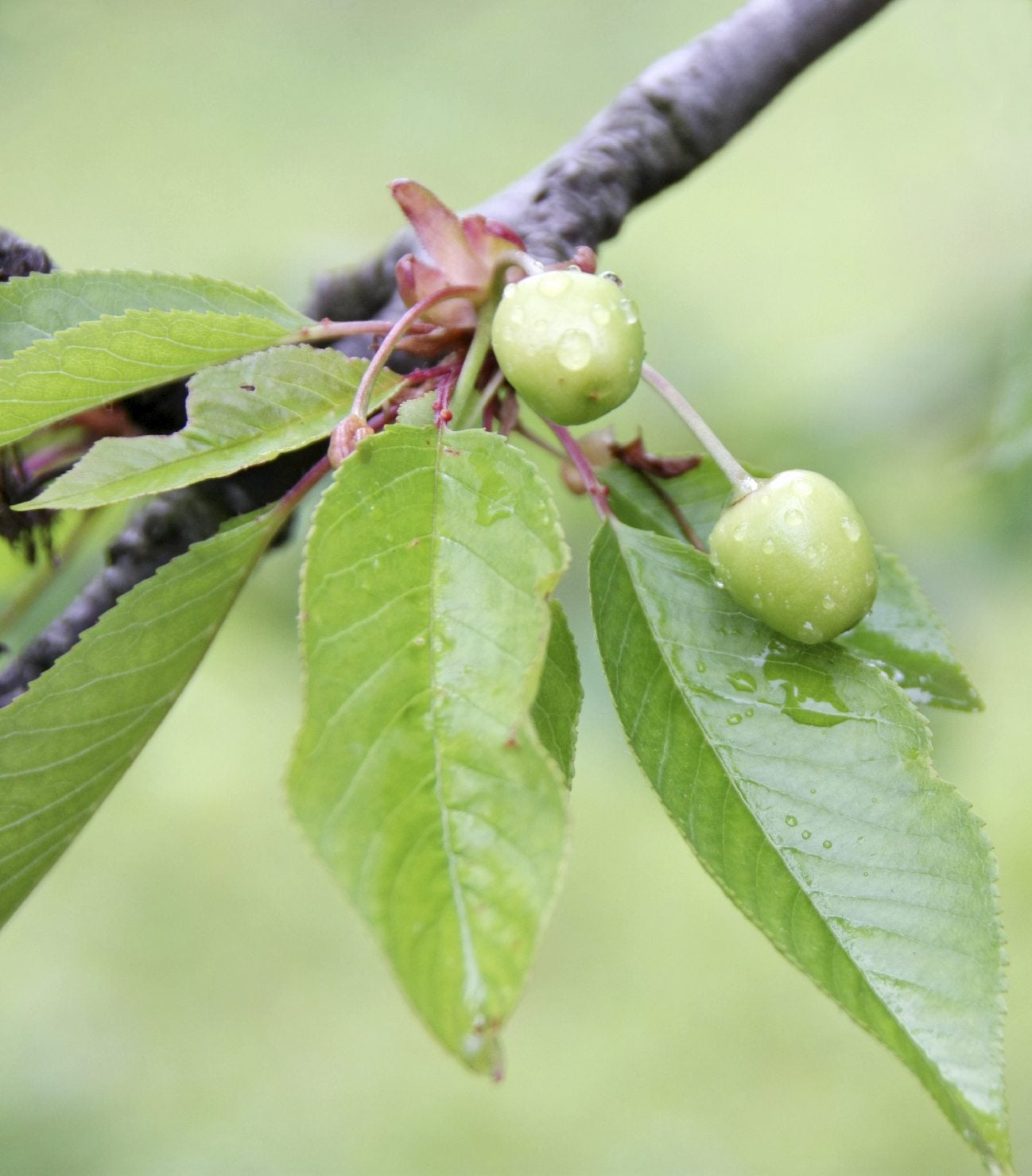Thinning Cherry Trees: Learn How And When To Thin Cherries


Cherry fruit thinning means removing immature fruits from a heavily laden cherry tree. You thin a fruit tree to allow the remaining fruit to develop more fully and to help the fruit to set for the following year. Thinning cherry trees is usually not necessary. However, if your cherry tree has a heavy load on its branches, you might consider thinning it. Read on to learn how to thin out a cherry tree and when to thin cherries.
Thinning Cherry Trees
When you thin a fruit tree, it accomplishes more than just giving the remaining fruit more elbow room. Thinning trees also prevents limb breakage, especially if you thin fruit from branch tips. It can also keep the tree producing year after year, rather than having a big set one year and hardly anything the second. Most fruit trees, including cherries, thin themselves; that is, they drop excess or damaged fruit before it matures. This is sometimes termed “June drop” because it often happens at the beginning of summer. For some trees, this self-thinning is sufficient. This is often the case with cherries. For that reason, thinning cherry trees is not regularly done.
When to Thin Cherries
If you decide that your cherry tree is overburdened by an immense load of immature fruit, you may decide to thin it. If you do, trim at the appropriate time, early enough that the remaining fruit have time to ripen. You may wonder when to trim cherries. Generally, you should do cherry fruit thinning in early April. If the cultivar provides cherries later than usual, thin the tree up to mid-May.
How to Thin Out a Cherry Tree
When it comes to thinning cherry trees, you don’t need fancy equipment. Your hands will be sufficient unless the fruit is well above your reach. In that case, you may need to use pole-thinning equipment. If you are hand thinning, start at one end of a branch and remove fruit as you go along. Do not leave more than ten cherries on any one spur. If you need to use pole thinning for thinning cherry trees, you strike a cluster of fruit with the pole just hard enough to dislodge enough to break up the cluster. You need to practice to get this right.
Sign up for the Gardening Know How newsletter today and receive a free copy of our e-book "How to Grow Delicious Tomatoes".

Teo Spengler is a master gardener and a docent at the San Francisco Botanical Garden, where she hosts public tours. She has studied horticulture and written about nature, trees, plants, and gardening for more than two decades, following a career as an attorney and legal writer. Her extended family includes some 30 houseplants and hundreds of outdoor plants, including 250 trees, which are her main passion. Spengler currently splits her life between San Francisco and the French Basque Country, though she was raised in Alaska, giving her experience of gardening in a range of climates.